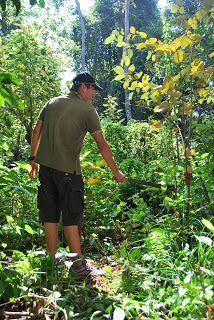
A new article published in the forthcoming issue of Forestry Ecology & Management assesses the role and conservation effectiveness of protected and community managed forests in the long-term maintenance of forest cover in the tropics. With authors from Mexico, Indonesia, and Spain, the meta-analysis compares land use and land cover change data from peer-reviewed case studies on 40 protected areas and 33 community managed forests. The study found that community managed forests presented lower and less variable annual deforestation rates than protected forests, which backs up other recent challenges to the long-held belief that the best way to conserve forests is to set them aside in strictly protected areas. The authors propose that “a more resilient and robust forest conservation strategy should encompass a regional vision with different land use types in which social and economic needs of local inhabitants, as well as tenure rights and local capacities, are recognized.”
Overall, the paper suggests that community-managed forests could be a cost-efficient and effective solution to reducing deforestation and ensuring the sustainable use of forests while benefiting local livelihoods. It also underscores earlier findings by other scientists that show that greater rule-making autonomy at the local level are associated with better forest management and livelihood benefits. The full text of the article can be downloaded here.
